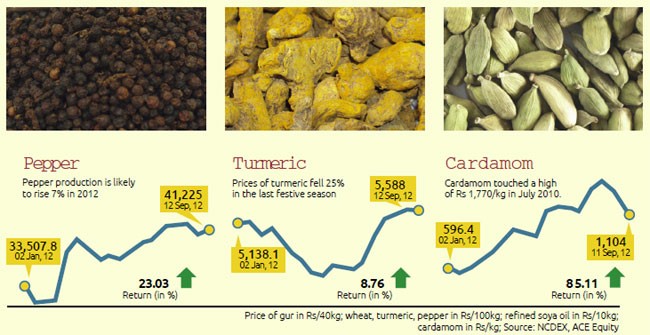Why Invest In Commodities
Post on: 13 Июль, 2015 No Comment

Market Wrap: Oil Hammered As Analysts Say Storage Space Running Out; NatGas Plunges; Gold Up
Why Invest In Commodities?
Now it’s time for the big question: Why invest in commodities at all?
The short answer is that, based on historical data, adding commodities exposure will increase your returns while lowering your risk.
Why? Well, to understand that, we first have to talk about the single most important topic in investing: asset allocation.
It’s The Markets That Matter
Most investment advice you read in the paper is focused on picking stocks. We fret about it; we watch Jim Cramer on CNBC; we read the Barron’s roundtable issues. An entire industry has built up around picking stocks.
But the data show that picking stocks doesn’t actually have much of an impact on your portfolio’s performance, as long as you make reasonable choices. What really matters is what markets you pick, not what stocks you choose. Brinson, Hood and Beebower wrote the seminal study on this in 1986: Determinants of Portfolio Performance. 1 The authors examined the quarterly performance of pension funds and found that how these funds invested among different markets accounted for 94 percent of their performance, leaving just 2 percent left over for when (market timing) and 4 percent for what (security selection).
In other words, the pension’s asset allocation decisions were key to its returns.
What Is Asset Allocation?
Asset allocation is how you invest your portfolio in different parts of the market: cash, stocks, bonds, commodities, real estate, etc.
Asset allocation is important because each of these assets tends to perform in a certain way: Some are volatile; others are not volatile; some rise when the economy does well; others are countercyclical; and so on.
The goal with a smart asset allocation plan is to build a portfolio that fits your ability to accept risk and meets your needs for expected returns.
Consciously or not, you have already made a lot of asset allocation decisions. Some small portion of your wealth is probably in cash: bank deposits, money market mutual funds, etc. A much larger portion is probably invested in your house: real estate. And then you have what you think of as your portfolio: a collection of stocks, mutual funds, bonds and maybe, just maybe, commodities.

Correlations: The Real Reason For Commodities
One goal of a smart asset allocation plan is to create a diversified portfolio. That way, if part of your portfolio hits a rough patch, the other part may perform well. For this reason, it’s important to make sure your different assets are. well. different.
When two things move in sync, it’s called correlation. A correlation of 1.0 means that two things move in lockstep: An elevator going down and the person riding inside are perfectly correlated. A correlation of zero means there’s no rhyme or reason to the comparison at all: An elevator going down and someone sitting in the lobby reading a paper are uncorrelated. A -1.0 correlation means two things move in opposite directions: An elevator and its counterweight are negatively correlated.
When we pick asset classes, we generally want them to be as uncorrelated as possible. If our stock fund and our bond fund go up and down at the same time, we’ve gained nothing but another line on our statement.
Generally speaking, bonds are only minimally correlated with stocks, which is one of the reasons people like having them in their portfolio. But commodities (and particularly commodity futures) have actually been negatively correlated to both stocks and bonds historically, as illustrated in the paper Facts and Fantasies About Commodity Futures by Gary Gorton and K. Geert Rouwenhorst. In other words, when stocks and bonds head south, commodities tend to head north. Commodities are the only asset class that is negatively correlated to bonds, making them a powerful tool for diversification.
Correlation of Commodity Futures Returns with Stocks, Bonds and Inflation 2 —
Overlapping Return Data 1959/7 — 2004/12














